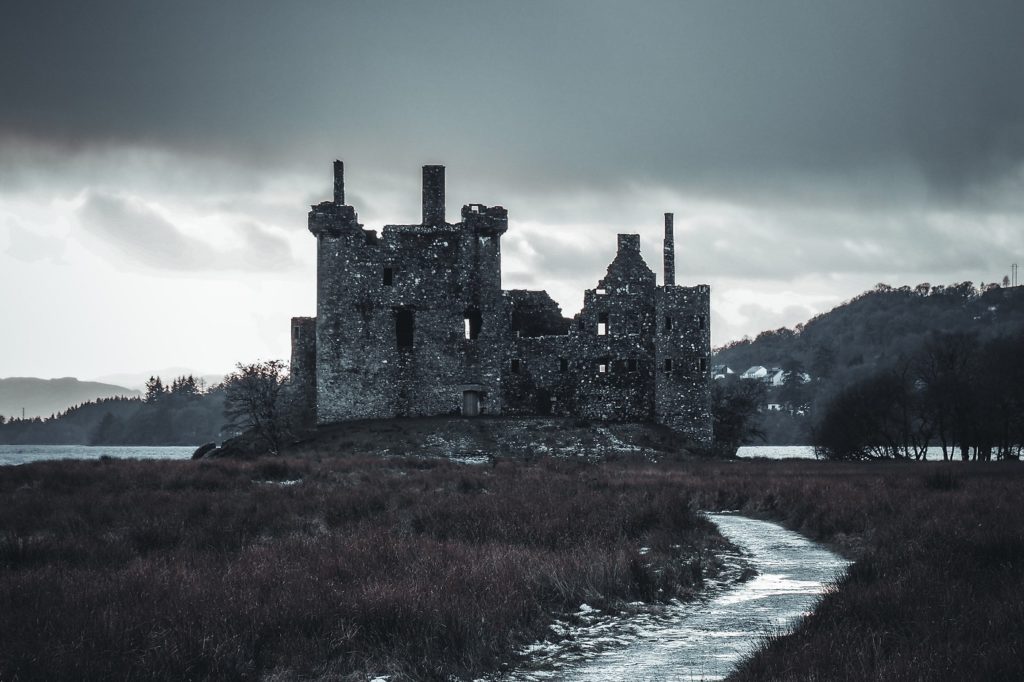It is currently in vogue to compare the United States with the nightmarish dystopias of George Orwell’s 1984 and Aldous Huxley’s Brave New World. There is even a subgenre of Internet articles arguing over which of the two more accurately describes our world. But I think there is a better, less well-known contender for the most prophetic dystopian novel: Walker Percy’s Love in the Ruins.
Percy is most famous for The Moviegoer, an enigmatic commentary on American culture and the post-war South, written in 1961. Love in the Ruins arrived on the scene a decade later and differs significantly in tone and content. While The Moviegoer is realistic and opaque, Love in the Ruins is a comedic science fiction story about the end of the world, set in a cartoonish version of the 1980s. Despite its humor, however, the novel is a serious one, painting a startlingly accurate picture of modern America.
Polarization and Unrest
In Percy’s vision of the future United States, the country is defined by political polarization. The population is evenly split between wrathful, far-right conservatives who have branded themselves “Knotheads,” and scientifically minded, cosmopolitan progressives, now known simply as the Left. “The center did not hold,” protagonist Tom More sardonically intones. Sound familiar?
Start your day with Public Discourse
Sign up and get our daily essays sent straight to your inbox.The country as a whole is characterized by spiritual malaise, sporadic violence, and rising rates of suicide. Sadly, these conditions are not very different from those of today’s world.
The parallels to today become even more acute when Percy turns to religion. Political divides in Love in the Ruins have penetrated the churches, mainline Protestants aligning with the left and evangelicals with the right. Meanwhile, orthodox Catholics are but a remnant, most believers having joined either the American Catholic Church––which only prays the Latin Mass and plays the national anthem during the elevation of the Eucharist––or a coalition of Germanic schismatics, who have done away with the vow of celibacy as a prerequisite for priesthood. If this doesn’t strike a chord, you must not follow the news very closely (or else not be a Catholic).
Still more similarities follow: in this dystopia, the nation faces no major external threats and is for all intents and purposes the most prosperous in the world. Rather, polarization has its origin in social issues. Sexuality, abortion, euthanasia, and above all race are the fault lines on which the public square has fractured. A resurgence of segregationist policies coincides with the rise of a violent black separatist movement, and More laments America’s inability to escape its racist past. There are few more profound meditations on the legacy of slavery in American literature than this one:
God, it was always the [race problem], now, just as in 1883, 1783, 1683, and hasn’t it always been that since the first tough God-believing Christ-haunted cunning violent rapacious Visigoth-Western-Gentile first set foot here with the first black man: the one willing to risk everything, take all or lose all, the other willing just to wait and outlast because once he was violated all he had to do was wait because sooner or later the first would wake up and know that he had flunked, been proved a liar where he lived, and no man can live with that. And sooner or later the lordly Visigoth-Western-Gentile-Christian-Americans would have to falter, fall out, turn upon themselves like scorpions in a bottle.
Finally, Percy accurately predicts a precipitous decline in Americans’ mental health. The Knotheads increasingly suffer from anger management issues and obsession with conspiracy theories. Meanwhile, the Leftists feel more and more anxious and detached from the world around them. The country as a whole is characterized by spiritual malaise, sporadic violence, and rising rates of suicide. Sadly, these conditions are not very different from those of today’s world.
People and Personal Responsibility
All this is to say that Love in the Ruins is a remarkably prescient book, probably the most prescient in English dystopian fiction. But what can it teach us in the manner of solutions to our national woes? There are three main lessons that Americans today should take away from this important work.
It also becomes clear that they are all equally capable of acting like monsters, given the right circumstances. The idea that one group of people is morally superior to the other is proven to be a dangerous lie, and one that is easily exploited for evil purposes.
First, Percy is adamant that while politics do matter, it is impossible to generalize about the personal morality of liberals and conservatives. As More says, “Though the two make much of their differences––one speaking of ‘outworn dogmas and creeds,’ the other of ‘atheism and immorality,’ etcetera etcetera––to tell the truth, I do not notice a great deal of difference between the two.” Throughout the novel, it becomes clear that almost all the characters are motivated by faith in their worldview, love for their families, and a natural desire for material gain. It also becomes clear that they are all equally capable of acting like monsters, given the right circumstances. The idea that one group of people is morally superior to the other is proven to be a dangerous lie, and one that is easily exploited for evil purposes.
Second, Percy seeks to convey that utopian and fundamentalist ideologies always lead to a disregard for human life in the here and now. Multiple characters in Love in the Ruins struggle with the temptation to pursue abstract notions of the good instead of confronting and loving the world right in front of them. For the protagonist’s wife, this leads to obsessing over gnostic spirituality––and abandoning her husband. For others, it leads to forming a hippie commune in the Louisiana bayous––and ultimately senseless violence. For Percy, divorcing one’s mind from the physical can only produce what he calls “the Lucifer syndrome: that is, the envy of the incarnate condition and a resulting caricature of the bodily appetites.” Following Tolstoy and Dostoyevsky, he identifies true virtue with care for actual people, not faraway ideals or the abstract notion of “humanity.”
This brings us to the third important lesson, which is that national revitalization will never come from punditry or intellectual reflection alone, but only from hard work and investment in our institutions and communities. Perhaps the greatest line in the whole book is More’s succinct assessment of the country’s decline: “Don’t tell me the U.S.A. went down the drain because of Leftism, Knotheadism, apostasy, pornography, polarization, etcetera etcetera. All these things may have happened, but what finally tore it was that things stopped working and nobody wanted to be a repairman.” There is a close connection here to Yuval Levin’s latest work, A Time to Build. Both Percy and Levin identify outsider-ism and performative politics not as the cure to America’s ills but a major cause of them.
Less Politics, More Humility and Hard Work
At the end of Love in the Ruins, the protagonist’s priest encourages him to focus less on himself and his ideas and more on things like “doing our jobs, . . . showing a bit of ordinary kindness to people, particularly our own families, . . . [and] doing what we can for our poor unhappy country––things which, please forgive me, sometimes seem more important than dwelling on a few middle-aged daydreams.” In our current age of obsessive media consumption, news reading, and opinion sharing, this is good advice. Political polarization is a serious problem, but it cannot be solved by becoming ever more extreme. The path forward, for us as it is for Tom More, lies not in criticism and activism but in acquiring a proper perspective and fulfilling basic social duties.
National revitalization will never come from punditry or intellectual reflection alone, but only from hard work and investment in our institutions and communities.
Love in the Ruins speaks to our present moment in the United States like few other books. From the state of the political parties to divisions within the Catholic Church to the renewal of racial tensions, Percy’s predictions are eerily accurate. Even more important, though, is what Percy has to teach us about the dangers of moral superiority, ideological idealism, and the capacity of intellectual humility and hard work for achieving genuine progress. In this divided, contentious time, we would do well to revisit this classic work––and take its lessons to heart.














